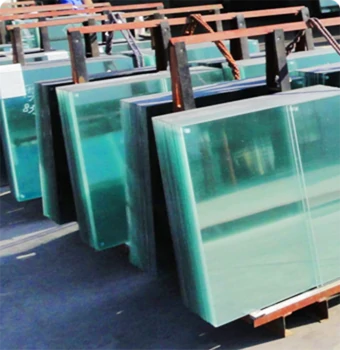Tempered Glass vs. Normal Glass Understanding the Differences
When it comes to selecting the right type of glass for construction, interior design, or even everyday objects, the choice often narrows down to two popular options tempered glass and normal glass. Although both serve similar functions in terms of transparency and lightweight properties, their physical characteristics, safety standards, and applications vary significantly. Understanding these differences is crucial for making informed choices based on the specific requirements of a project or product.
What is Normal Glass?
Normal glass, often referred to as annealed glass, is the most common type of glass used in various applications. It is made by heating silica sand and other raw materials to high temperatures and then cooling them slowly. This slow cooling process relieves internal stresses, resulting in a stable and flat glass product. However, normal glass is relatively fragile and vulnerable to breaks. When subjected to impact or thermal stress, it tends to break into large shards, posing safety risks.
What is Tempered Glass?
Tempered glass, on the other hand, undergoes a specialized manufacturing process that enhances its strength and safety. After the initial glass formation, it is heated to about 620 degrees Celsius (about 1,148 degrees Fahrenheit) and then rapidly cooled. This process, known as tempering, increases surface compression and internal tension, making tempered glass much more durable than normal glass. When it does break, it shatters into small, blunt pieces rather than sharp shards, significantly reducing the risk of injury.
Strength and Durability
One of the most significant advantages of tempered glass is its strength. It is typically five to six times stronger than normal glass of the same thickness. This strength allows it to withstand high impacts and sudden temperature changes without breaking. For this reason, tempered glass is often used in environments where safety is paramount, such as in shower doors, glass doors, glass railings, and facades of commercial buildings.
Normal glass lacks this level of resilience and is more prone to cracking or shattering under pressure or sudden temperature fluctuations. It is best suited for applications where it is less likely to be impacted or where the consequences of breaking are minimal, such as in picture frames or decorative items.
tempered glass and normal glass
Applications and Uses
Due to its enhanced safety features and superior strength, tempered glass is widely used in commercial and residential applications. It is often utilized in locations that require durability and safety standards, such as
1. Automobiles Tempered glass is commonly used in car windows due to its shatter-resistant properties.
2. Shower Enclosures The safety provided by tempered glass is essential in wet environments like bathrooms.
3. Glass Doors and Windows Many commercial buildings use tempered glass for storefronts and facades.
4. Furniture Tables with glass tops often use tempered glass to prevent breakage.
In contrast, normal glass finds use in applications where safety is not as critical. Common uses include
1. Windows In residential settings where the risk of impact is low.
2. Picture Frames Where protection from minor hazards is sufficient.
3. Decorative Pieces In items where fragility does not pose a significant risk.
Cost Considerations
When choosing between tempered and normal glass, cost is often a primary concern. Tempered glass is typically more expensive than normal glass due to the additional manufacturing processes it undergoes. However, many may find that the increased safety and durability justify the investment, especially in high-risk applications.
Conclusion
In summary, while both tempered glass and normal glass have their respective places in design and construction, their differences in strength, safety, and applications are essential to understand. By opting for tempered glass in areas where safety is crucial, you can significantly reduce the risk of injury and enhance the durability of your installations. Conversely, for less hazardous applications, normal glass may suffice. Ultimately, the decision should reflect the specific needs of the project at hand and the associated safety considerations.
 Afrikaans
Afrikaans  Albanian
Albanian  Amharic
Amharic  Arabic
Arabic  Armenian
Armenian  Azerbaijani
Azerbaijani  Basque
Basque  Belarusian
Belarusian  Bengali
Bengali  Bosnian
Bosnian  Bulgarian
Bulgarian  Catalan
Catalan  Cebuano
Cebuano  Corsican
Corsican  Croatian
Croatian  Czech
Czech  Danish
Danish  Dutch
Dutch  English
English  Esperanto
Esperanto  Estonian
Estonian  Finnish
Finnish  French
French  Frisian
Frisian  Galician
Galician  Georgian
Georgian  German
German  Greek
Greek  Gujarati
Gujarati  Haitian Creole
Haitian Creole  hausa
hausa  hawaiian
hawaiian  Hebrew
Hebrew  Hindi
Hindi  Miao
Miao  Hungarian
Hungarian  Icelandic
Icelandic  igbo
igbo  Indonesian
Indonesian  irish
irish  Italian
Italian  Japanese
Japanese  Javanese
Javanese  Kannada
Kannada  kazakh
kazakh  Khmer
Khmer  Rwandese
Rwandese  Korean
Korean  Kurdish
Kurdish  Kyrgyz
Kyrgyz  Lao
Lao  Latin
Latin  Latvian
Latvian  Lithuanian
Lithuanian  Luxembourgish
Luxembourgish  Macedonian
Macedonian  Malgashi
Malgashi  Malay
Malay  Malayalam
Malayalam  Maltese
Maltese  Maori
Maori  Marathi
Marathi  Mongolian
Mongolian  Myanmar
Myanmar  Nepali
Nepali  Norwegian
Norwegian  Norwegian
Norwegian  Occitan
Occitan  Pashto
Pashto  Persian
Persian  Polish
Polish  Portuguese
Portuguese  Punjabi
Punjabi  Romanian
Romanian  Russian
Russian  Samoan
Samoan  Scottish Gaelic
Scottish Gaelic  Serbian
Serbian  Sesotho
Sesotho  Shona
Shona  Sindhi
Sindhi  Sinhala
Sinhala  Slovak
Slovak  Slovenian
Slovenian  Somali
Somali  Spanish
Spanish  Sundanese
Sundanese  Swahili
Swahili  Swedish
Swedish  Tagalog
Tagalog  Tajik
Tajik  Tamil
Tamil  Tatar
Tatar  Telugu
Telugu  Thai
Thai  Turkish
Turkish  Turkmen
Turkmen  Ukrainian
Ukrainian  Urdu
Urdu  Uighur
Uighur  Uzbek
Uzbek  Vietnamese
Vietnamese  Welsh
Welsh  Bantu
Bantu  Yiddish
Yiddish  Yoruba
Yoruba  Zulu
Zulu 

